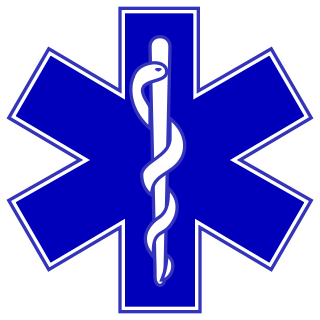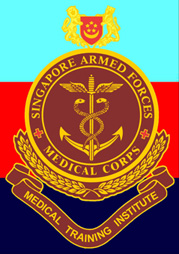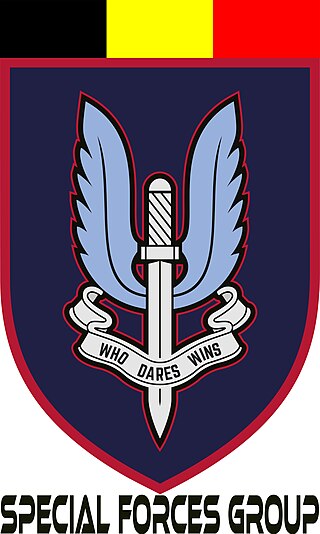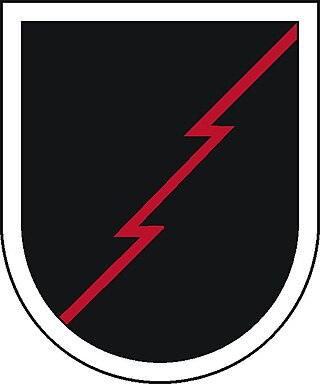Related Research Articles

An emergency medical technician is a medical professional that provides emergency medical services. EMTs are most commonly found serving on ambulances and in fire departments in the US and Canada, as full-time and some part-time departments require their firefighters to at least be EMT certified.

Battlefield medicine, also called field surgery and later combat casualty care, is the treatment of wounded combatants and non-combatants in or near an area of combat. Civilian medicine has been greatly advanced by procedures that were first developed to treat the wounds inflicted during combat. With the advent of advanced procedures and medical technology, even polytrauma can be survivable in modern wars. Battlefield medicine is a category of military medicine.

The U.S. Army Medical Command (MEDCOM) is a direct reporting unit of the U.S. Army that formerly provided command and control of the Army's fixed-facility medical, dental, and veterinary treatment facilities, providing preventive care, medical research and development and training institutions. On 1 October 2019, operational and administrative control of all military medical facilities transitioned to the Defense Health Agency.
The Seattle & King County Emergency Medical Services System is a fire-based two-tier response system providing prehospital basic and advanced life support services.

A medic is a medical practitioner or student such as a medical doctor or an emergency medical responder such as a paramedic.

Casualty evacuation, also known as CASEVAC or by the callsign Dustoff or colloquially Dust Off, is a military term for the emergency patient evacuation of casualties from a combat zone. Casevac can be done by both ground and air. "DUSTOFF" is the callsign specific to U.S. Army Air Ambulance units. CASEVACs by air today are almost exclusively done by helicopter, a practice begun on a small scale toward the end of World War II; before that, STOL aircraft, such as the Fieseler Fi 156 or Piper J-3 were used.

A field hospital is a temporary hospital or mobile medical unit that takes care of casualties on-site before they can be safely transported to more permanent facilities. This term was initially used in military medicine, but it has also been used to describe alternate care sites used in disasters and other emergency situations.

A combat medic is responsible for providing emergency medical treatment at a point of wounding in a combat or training environment, as well as primary care and health protection and evacuation from a point of injury or illness. Additionally, medics may also be responsible for the creation, oversight, and execution of long-term patient care plans in consultation with or in the absence of a readily available doctor or advanced practice provider. Combat medics may be used in hospitals and clinics, where they have the opportunity to work in additional roles, such as operating medical and laboratory equipment and performing and assisting with procedures.

The SAF Medical Training Institute (SMTI) is a military medicine training institute under the Army Medical Service within the SAF Medical Corps. As part of the medical corps, the institute oversees the medical vocational training for SAF service members under the Army, Navy, Air Force, as well as the Singapore Civil Defence Force.

The term military medicine has a number of potential connotations. It may mean:

The Special Forces Group is the special forces unit in the Land Component of the Belgian Armed Forces.

The 2nd Health Battalion (2HB) is an Australian Army unit of the 2nd Health Brigade. It is primarily based at Gallipoli Barracks in Enoggera, Queensland, however Delta Company is located in Sydney, Newcastle and Canberra supporting NSW and ACT. The battalion is a rapidly deployable unit to provide support across the entire land based trauma system. This included integral, evacuation, initial wound surgery, resuscitation, damage control resuscitation and medium to high intensity nursing care, in the area of operations.

Combat medics of the United States military may put themselves at greater risk than many other roles on the battlefield. In recent conflicts, the enemies faced by a professional army may not have respect for the laws of war and may actively target combat medics for the significant value they have in keeping the unit combat-effective. Since the non-combatant status granted to medics may not always be respected, modern combat medics carry weapons for personal defense and in most Western armies are virtually indistinguishable from regular infantrymen.

7 Medical Battalion Group is the specialist Airborne Medical Unit of the South African Military Health Service. The Battalion's main task is to render medical support to the South African Airborne and Special Forces. The unit falls under the command of the Mobile Military Health Formation.

The Special Forces Qualification Course (SFQC) or, informally, the Q Course is the initial formal training program for entry into the United States Army Special Forces. Phase I of the Q Course is Special Forces Assessment and Selection (SFAS). A candidate who is selected at the conclusion of SFAS will enable a candidate to continue to the next of the four phases. If a candidate successfully completes all phases they will graduate as a Special Forces qualified soldier and then, generally, be assigned to a 12-men Operational Detachment "A" (ODA), commonly known as an "A team." The length of the Q Course changes depending on the applicant's primary job field within Special Forces and their assigned foreign language capability but will usually last between 56 and 95 weeks.
68W is the Military Occupational Specialty (MOS) for the United States Army's Combat Medic. 68Ws are primarily responsible for providing emergency medical treatment at point of wounding on the battlefield, limited primary care, and health protection and evacuation from a point of injury or illness. 68Ws are certified as Emergency Medical Technicians (EMT) through the National Registry of Emergency Medical Technicians (NREMT). However, 68Ws often have a scope of practice much wider than that of civilian EMTs. This specialty is open to males and females with minimum line scores of 107 GT and 101 ST on the Armed Services Vocational Aptitude Battery (ASVAB).

The 274th Forward Surgical Team (Airborne)—part of the 274th Forward Resuscitative and Surgical Detachment (Airborne)—is an airborne forward surgical team of the United States Army providing Level II care far forward on the battlefield. It was first constituted in 1944 and served in Europe during World War II. More recently it has been involved in relief operations following natural disasters and has undertaken several recent deployments to Iraq and Afghanistan. The 274th Forward Surgical Team was part of both the initial entry forces of Operation Enduring Freedom in 2001 and Operation Iraqi Freedom in 2003. Currently the unit falls under the command of the 28th Combat Support Hospital and is based at Fort Bragg, North Carolina.

Tactical Emergency medical services (TEMS) is out-of-hospital care given in hostile situations by specially trained practitioners. Tactical support provided through TEMS can be applied in either the civilian world, generally with special law enforcement teams such as SWAT and SERT, as well as with military special operations teams. Tactical EMS providers are paramedics, nurses, and physicians who are trained to provide life-saving care and, sometimes, transport in situations such as tactical police operations, active shooters, bombings, and natural disasters. Tactical medical providers (TMPs) provide care in high risk situations where there is an increased likelihood for law enforcement, civilian, or suspect casualties. TEMS units are also deployed in situations where traditional EMS or firefighters cannot respond. TMPs are specially trained and authorized to perform live-saving medical procedures in austere and often times unconventional environments. TMPs are also expected to be competent in weapons safety and marksmanship, small unit tactics, waterborne operations, urban search and rescue, and HAZMAT. TMPs also serve to train their respective teams in complex medical procedures that may be performed in their absence. TEMS providers are sometimes sworn police officers cross trained as paramedics, paramedics that are operators trained and integrated into the SWAT Team, or medical providers trained in tactical EMS who are then integrated into law enforcement or military units.

Tactical Combat Casualty Care, formerly known as Self Aid Buddy Care, is a set of guidelines for trauma life support in prehospital combat medicine published by the United States Defense Health Agency. They are designed to reduce preventable deaths while maintaining operational success. The TCCC guidelines are routinely updated and published by the Committee on Tactical Combat Casualty Care (CoTCCC), which is part of the Defense Committees on Trauma (DCoT) division of the Defense Health Agency (DHA). TCCC was designed in the 1990s for the Special Operations Command medical community. Originally a joint Naval Special Warfare Command and Special Operations Medical Research & Development initiative, CoTCCC developed combat-appropriate and evidence-based trauma care based on injury patterns of previous conflicts. The original TCCC corpus was published in a Military Medicine supplement in 1996. TCCC has since become a Department of Defense (DoD) course, conducted by National Association of Emergency Medical Technicians.

During World War II, the United States Army underwent significant changes and played a crucial role in the conflict, fundamentally shaping its purpose and structure. The primary objective of the U.S. Army during this period was to mobilize and deploy forces to combat Axis powers, including Germany, Italy, and Japan. This required a vast expansion of personnel and resources, leading to the largest military mobilization in American history up to that point.
References
This article includes a list of references, related reading, or external links, but its sources remain unclear because it lacks inline citations .(June 2008) |
- Army Form B6360 Rev 10/99
- British Army site